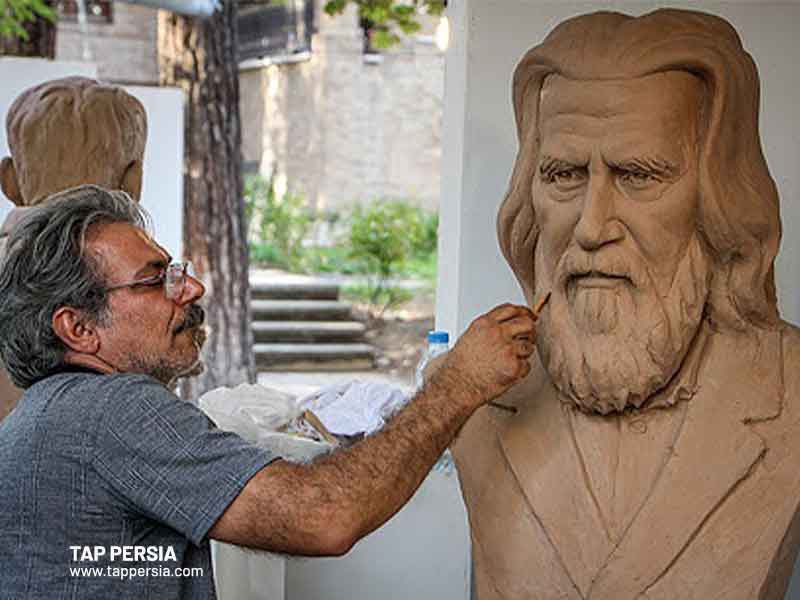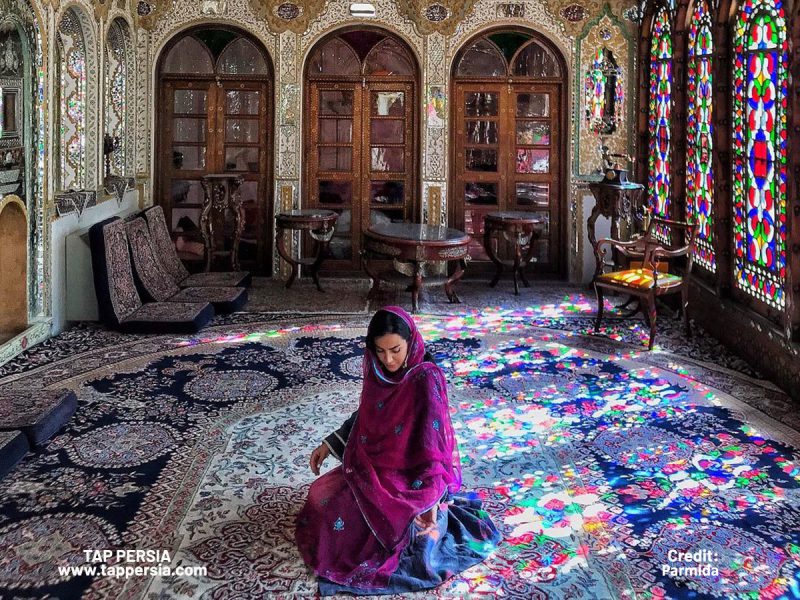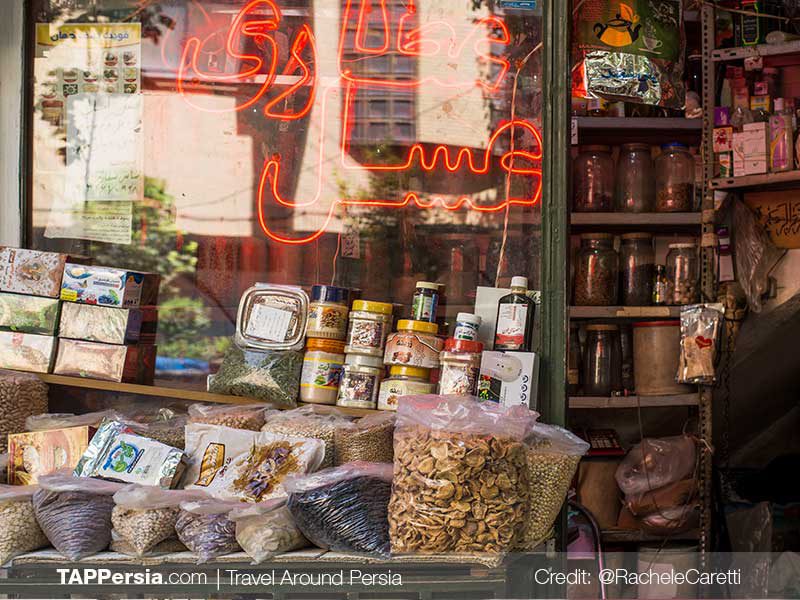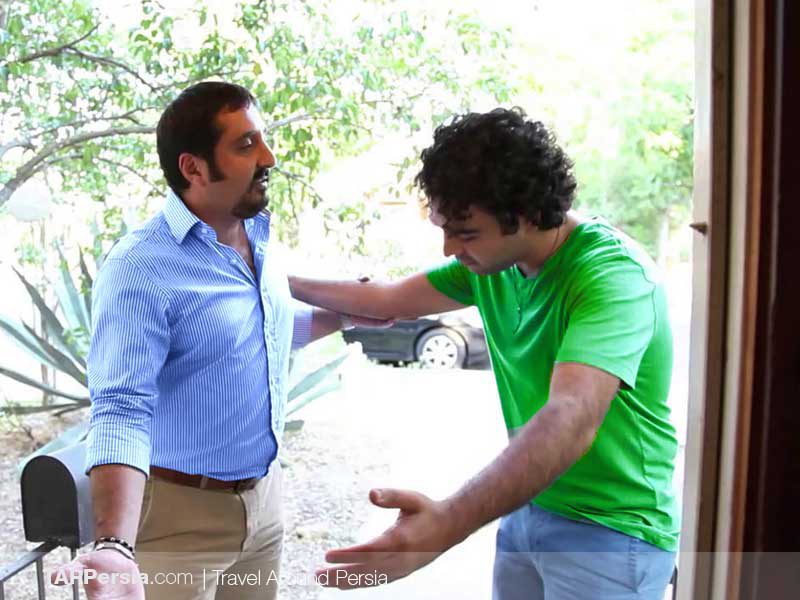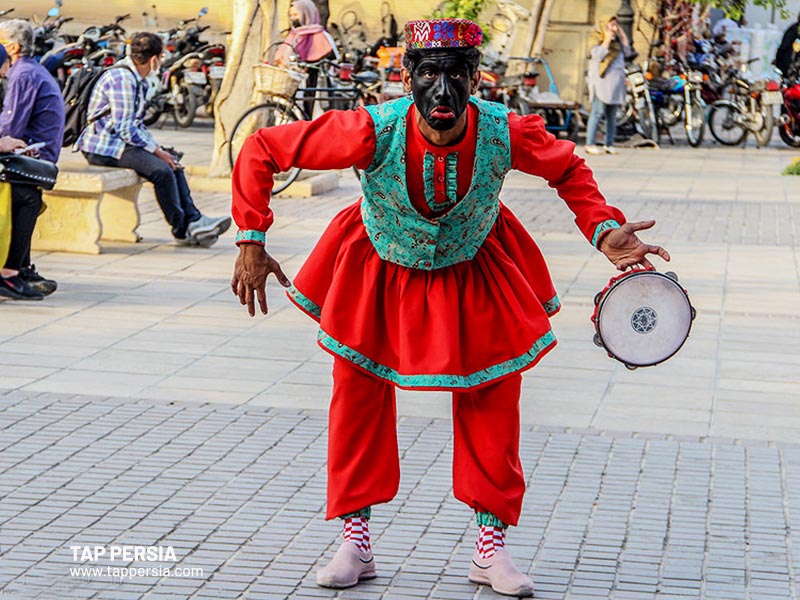
Joy, optimism, and most importantly, a fresh start! These three ideas are connected to the New Year. As humans have always kept track of the seasons, they have realized that spring is when nature regenerates. The never-ending struggle between the powers of light and darkness, good and evil, and the virtuous and the immoral is a common theme in the mythology surrounding the Persian New Year or Nowruz. As a result, we ask that you provide a bowl of Persian nuts on one side and a hot cup of tea with Persian sweets on the other as we approach the Persian New Year.
We would like for you to join us on a mythological journey up until the time the renowned Naqareh (drum) announces the start of a new year. Amoo Nowruz and Haji Firuz, along with Nane Sarma, are special characters representing Nowruz. We will talk about these fascinating mythological characters later in full detail. But first, let’s examine Nowruz’s historical background.
The History of Nowruz: Origins and Significance
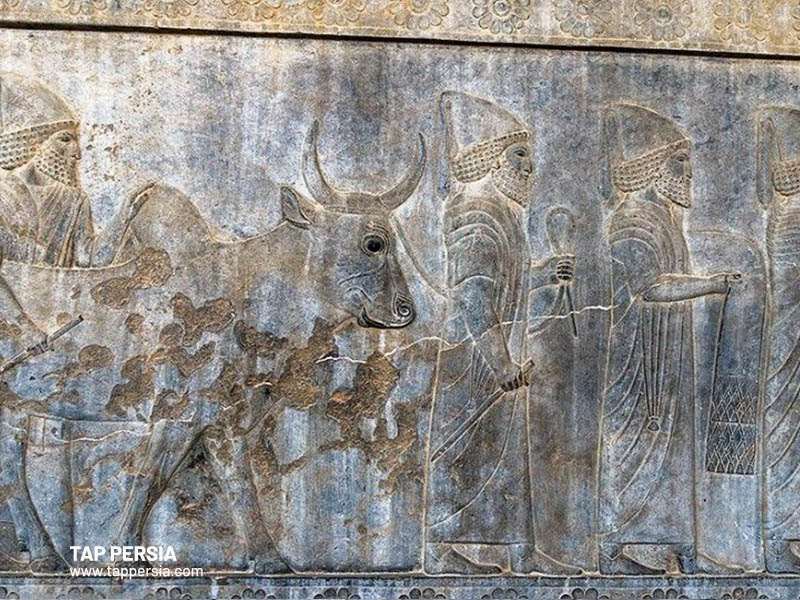
The earth’s inhabitants knew that light had triumphed over darkness when the sun shined brilliantly in the sky, bringing warmth and vitality to every living thing.
The sun was veiled by the dark clouds for a long time. In addition to the humans being worn out by the drought, the trees were in a deep sleep. The entire world is working against Jamshid, the sun god and monarch of Iran, as he fights the Ahriman. In the midst of the world’s destruction by Ahriman and his army, the brightness is waning. Jamshid, however, unexpectedly defeats Ahriman and reclaims his throne with the aid of Ahura Mazda, or God in Zoroastrianism. At this time, all of the plants begin to sprout, and the animals begin to sing joyfully. The world is beginning to get brighter.
In Persepolis or Takht’e Jamshid’s walls, there are engravings of Jamshid’s triumph. A lion and a bull may be seen triumphing over one another in Takht-e Jamshid in Iran. The lion is the emblem of strength, majesty, and light in Persian mythology, whereas the bull represents the shadows. The New Year is symbolized by this Parsi picture, which also depicts the triumph of light over darkness.
Nowruz, the Persian New Year and symbol of renewal
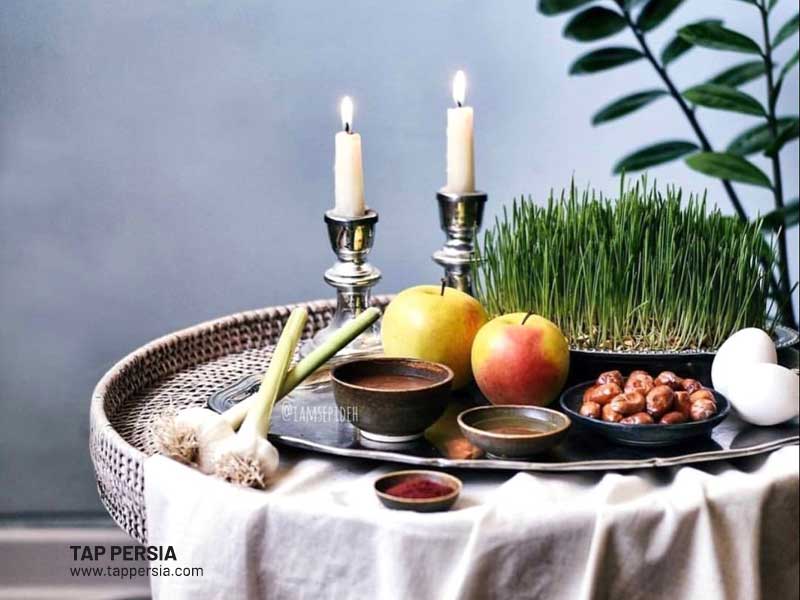
Days are gradually growing longer as winter gently sheds its snowy coat, the air is softer and warmer, and green leaves are starting to emerge from the ground. These are the telltale signals of spring, which also heralds the beginning of a brand new era in human history. The essence of Nowruz, Iran’s most cherished holiday and the Persian New Year, may be found here.
The word “Nowruz,” which literally translates to “New Day” in Avestan, refers to the purpose of this festival. People are encouraged to finish one chapter and turn the page to begin a new one, following the lead of Mother Nature. Every opportunity for a change or renewal can be celebrated on Nowruz, regardless of one’s faith, philosophical ideas, or ethnicity.
Worldwide celebration
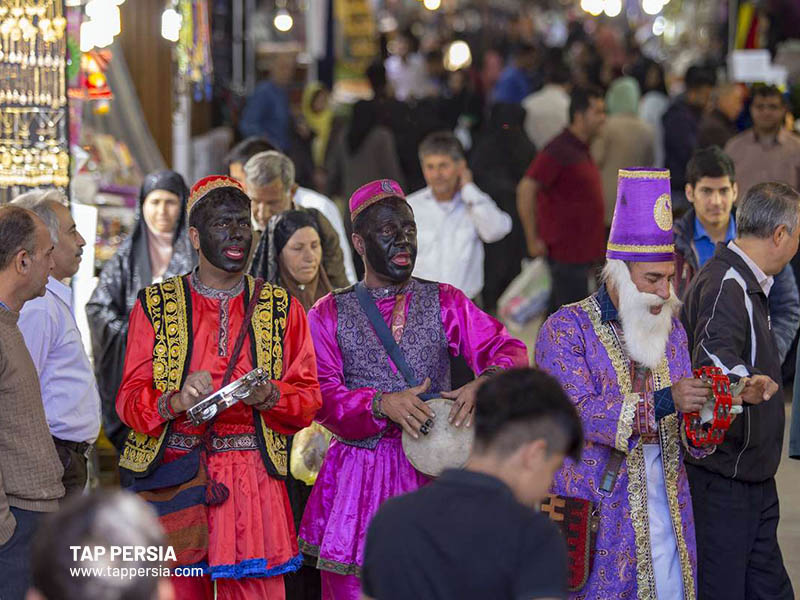
Because of its connections to the glorious history of the great Persian Empire and earlier, this festival is fundamental to Persian culture and Iranian identity. Regardless matter their backgrounds, beliefs, or customs, everyone in Iran observes the same Nowruz rites. Millions of people celebrate Nowruz across the world, not just in Iran but also in Iran’s neighboring nations including Iraq, India, Afghanistan, Tajikistan, Uzbekistan, Azerbaijan, Kazakhstan, and Kyrgyzstan as well as the Iranian diaspora.
In 2010, even the United Nations acknowledged these celebrations, and former US President Barack Obama used to express public greetings for the Persian New Year. It demonstrated how the essence of Nowruz is about coming together and going ahead on the right path despite any conflicts.
Because of this, people are urged to spread compassion and love on Nowruz because they think that whatever they do on that day will have an impact on the rest of the year.
Nane Sarma (Grandma Frost)
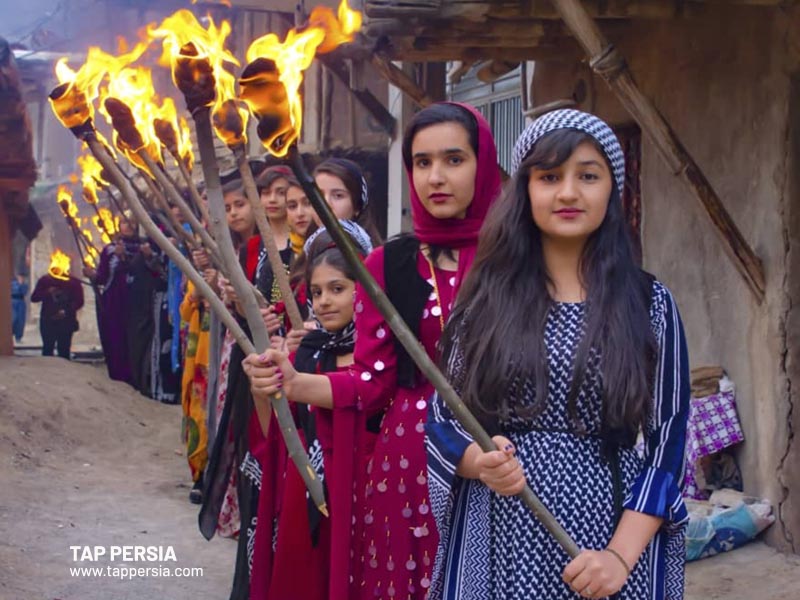
One more time, Nane Sarma shook her blanket as she observed little cotton fragments land on people’s cheeks below. From the cold comfort of her house, she was seeing the joyful people who were preparing for Nowruz and buying for the next New Year. Nane Sarma was folding the blanket and tapping the pillows while contemplating her beloved Amoo Nowruz.
A mythological figure with ties to Nowruz’s history, Nane Sarma gets up in the winter and spends a lot of time cleaning her home in preparation for Amu Nowruz. Her emotions for being apart from Amoo Nowruz convert the dust into snowflakes, and they also turn into the rain for the inhabitants of the land. As Khaneh Tekani, also known as is almost through cleaning the home, she notices the teeny-tiny sprouts on the trees and the teeny-tiny grass on the ground, which indicates that her most-wanted encounter is nigh. Before Nane Sarma retires to sleep for another year, Amoo Nowruz and Nane Sarma finally get to spend New Year’s Day together.
Meet Amoo Nowruz: The Persian Santa Claus
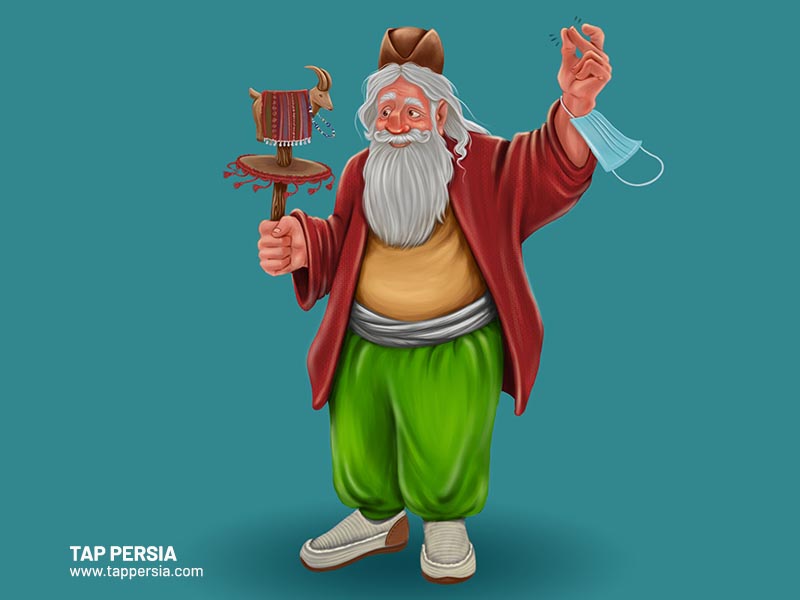
Amoo Nowruz is a character similar to Santa in Nowruz mythology. Amu Nowruz gives gifts when the New Year arrives and goes with his friend Haji Firooz to various locations. Now that you have heard Nane Sarma’s tale, you are aware that Amoo Nowruz makes his house his first stop before moving on to ensure that spring has arrived elsewhere on earth.
Amu Nowruz is portrayed in Iranian folklore as an elderly guy dressed in white and with a long white beard. He normally carries a stick in his hand and wears a blue scarf across his shoulder. Amoo Nowruz, in contrast to Santa, has almost completely disappeared from Iranian children’s hearts and imaginations. Yet Haji Firooz, his assistant’s persona, may be seen in the Nowruz-related streets.
Haji Firuz: The Jester of Nowruz
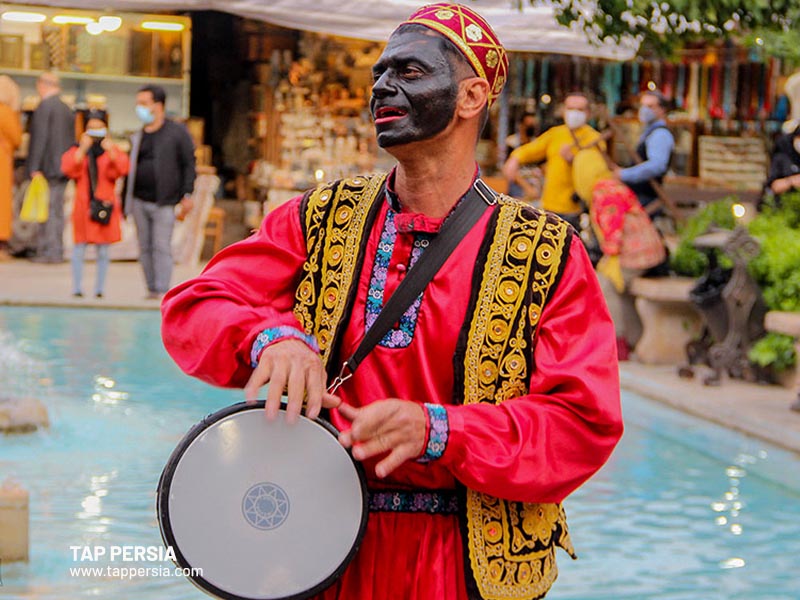
The most divisive figure in the folklore surrounding Nowruz is Haji Firuz, also known as Mobarak in roohozi performances. With a Dayereh (doira) in hand and playing music, he is a witty and caustic man dressed in crimson. The main point of contention, however, is to the color of his face, which was typically painted black using charcoal.
In the first Haji Firooz tale, he is revealed to be the deity of plants and embarks on a subterranean journey to rescue his wife Anahita (the goddess of water) from Ahriman. In order to find his wife and bring her back in order to deliver rain and preserve the plants, he must go through fire and ashes in the underworld. Hence, as he emerges from the underworld, his face is black from the smoke and fire, but he beams with pride at having saved both the planet and, more significantly, his wife!
Although this is a lovely tale, some historians contend that Haji Firuz also had a discriminatory viewpoint. The companion of Amu Nowruz, Haji Firooz, appears to be an Afro-Iranian who works for Amoo Nowruz.
What is the story of Haji Firuz?
The actual history of Haji Firuz is actually unknown. Hajji Firuz is said to be based on a custom known as Mir Nowruzi, according to certain sources. For “the last five days of the year,” a humorous character named Mir Nowruz ruled the town (Panje).
Who is the Persian new year character?
Iranian mythology gives rise to the legendary figure known as Amu Nowruz (Uncle Nowruz), sometimes referred to as Baba Nowruz. Folklore states that he and his companion Haji Firuz make a yearly appearance at the start of spring to herald the arrival of Nowruz, the Persian New Year.




